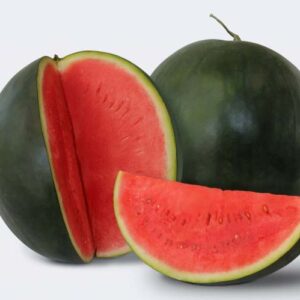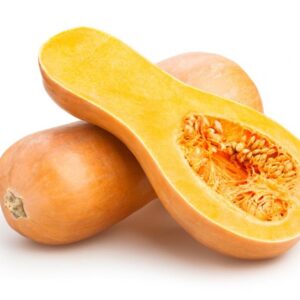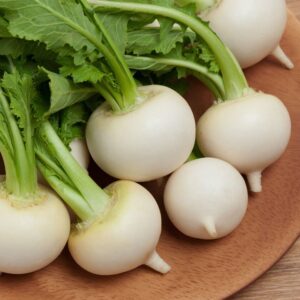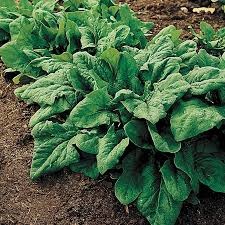Napa Cabbage variety of Chinese cabbage
Description of Napa Cabbage variety of Chinese cabbage
Napa cabbage, also known as Chinese cabbage or napa napa, is a popular variety of cabbage with a distinctive appearance and flavor. Here’s a description:
Appearance: Napa cabbage has elongated, barrel-shaped heads with tightly packed, crinkled leaves that form a dense yet tender texture. The outer leaves are typically pale green, while the inner leaves are lighter in color.
Flavour: It has a mild, sweet flavor with a slightly peppery undertone. Compared to traditional cabbage varieties, napa cabbage is less pungent and has a delicate taste that pairs well with a variety of ingredients.
Texture: The leaves of napa cabbage are crisp and succulent, providing a satisfying crunch when eaten raw. When cooked, the leaves become tender and slightly wilted while still retaining their texture.
Culinary Uses: Napa cabbage is a versatile ingredient in Asian cuisine, particularly in dishes from China, Korea, and Japan. It’s commonly used in stir-fries, soups, stews, and kimchi. Napa cabbage is also delicious when eaten raw in salads or used as a wrap for fillings.
Nutritional Benefits: Napa cabbage is low in calories and rich in vitamins and minerals, including vitamins A, C, and K, as well as folate, potassium, and calcium. It’s also high in fiber and antioxidants, making it a nutritious addition to your diet.
Storage: Napa cabbage can be stored in the refrigerator for up to two weeks. To extend its shelf life, wrap the cabbage in a damp paper towel and place it in a plastic bag or vegetable crisper drawer.
Overall, napa cabbage is prized for its mild flavor, crunchy texture, and versatility in cooking, making it a beloved ingredient in many Asian dishes and beyond.
Planting instructions for Napa Cabbage variety of Chinese Cabbage.
To plant Napa cabbage, follow these planting instructions:
- Timing: Napa cabbage is a cool-season crop, so plant it in early spring for a summer harvest or in late summer for a fall harvest. It grows best in cooler temperatures and can tolerate light frosts.
- Location: Choose a sunny location in your garden with well-drained soil. Napa cabbage prefers fertile soil with a pH of around 6.0 to 7.5.
- Soil Preparation: Prepare the soil by loosening it to a depth of about 8-10 inches and incorporating organic matter such as compost or well-rotted manure to improve soil fertility and structure.
- Sowing Seeds: Plant Napa cabbage seeds directly into the garden bed, spacing them about 12 inches apart in rows that are 18 to 24 inches apart. Plant the seeds about ¼ to ½ inch deep and cover them lightly with soil.
- Watering: Keep the soil consistently moist but not waterlogged, especially during dry periods. Water regularly to ensure even moisture levels, particularly during germination and establishment.
- Thinning: Once the seedlings emerge, thin them to ensure proper spacing, leaving the strongest plants to grow. Space the seedlings about 12 inches apart to allow room for the heads to develop fully.
- Weed Control: Keep the area around the plants free from weeds, which can compete for nutrients and water. Mulching can help suppress weeds and conserve moisture.
- Fertilization: Napa cabbage benefits from regular fertilization. Side-dress with a balanced fertilizer or compost tea every few weeks to provide the plants with the nutrients they need for healthy growth.
- Harvesting: Napa cabbage can be harvested when the heads are firm and dense, typically about 60-70 days after planting. Cut the heads at the base of the plant using a sharp knife. Harvest the entire head or pick individual leaves as needed.
Description of Napa Cabbage variety of Chinese cabbage
Napa cabbage, also known as Chinese cabbage or napa napa, is a popular variety of cabbage with a distinctive appearance and flavor. Here’s a description:
Appearance: Napa cabbage has elongated, barrel-shaped heads with tightly packed, crinkled leaves that form a dense yet tender texture. The outer leaves are typically pale green, while the inner leaves are lighter in color.
Flavour: It has a mild, sweet flavor with a slightly peppery undertone. Compared to traditional cabbage varieties, napa cabbage is less pungent and has a delicate taste that pairs well with a variety of ingredients.
Texture: The leaves of napa cabbage are crisp and succulent, providing a satisfying crunch when eaten raw. When cooked, the leaves become tender and slightly wilted while still retaining their texture.
Culinary Uses: Napa cabbage is a versatile ingredient in Asian cuisine, particularly in dishes from China, Korea, and Japan. It’s commonly used in stir-fries, soups, stews, and kimchi. Napa cabbage is also delicious when eaten raw in salads or used as a wrap for fillings.
Nutritional Benefits: Napa cabbage is low in calories and rich in vitamins and minerals, including vitamins A, C, and K, as well as folate, potassium, and calcium. It’s also high in fiber and antioxidants, making it a nutritious addition to your diet.
Storage: Napa cabbage can be stored in the refrigerator for up to two weeks. To extend its shelf life, wrap the cabbage in a damp paper towel and place it in a plastic bag or vegetable crisper drawer.
Overall, napa cabbage is prized for its mild flavor, crunchy texture, and versatility in cooking, making it a beloved ingredient in many Asian dishes and beyond.
Planting instructions for Napa Cabbage variety of Chinese Cabbage.
To plant Napa cabbage, follow these planting instructions:
- Timing: Napa cabbage is a cool-season crop, so plant it in early spring for a summer harvest or in late summer for a fall harvest. It grows best in cooler temperatures and can tolerate light frosts.
- Location: Choose a sunny location in your garden with well-drained soil. Napa cabbage prefers fertile soil with a pH of around 6.0 to 7.5.
- Soil Preparation: Prepare the soil by loosening it to a depth of about 8-10 inches and incorporating organic matter such as compost or well-rotted manure to improve soil fertility and structure.
- Sowing Seeds: Plant Napa cabbage seeds directly into the garden bed, spacing them about 12 inches apart in rows that are 18 to 24 inches apart. Plant the seeds about ¼ to ½ inch deep and cover them lightly with soil.
- Watering: Keep the soil consistently moist but not waterlogged, especially during dry periods. Water regularly to ensure even moisture levels, particularly during germination and establishment.
- Thinning: Once the seedlings emerge, thin them to ensure proper spacing, leaving the strongest plants to grow. Space the seedlings about 12 inches apart to allow room for the heads to develop fully.
- Weed Control: Keep the area around the plants free from weeds, which can compete for nutrients and water. Mulching can help suppress weeds and conserve moisture.
- Fertilization: Napa cabbage benefits from regular fertilization. Side-dress with a balanced fertilizer or compost tea every few weeks to provide the plants with the nutrients they need for healthy growth.
- Harvesting: Napa cabbage can be harvested when the heads are firm and dense, typically about 60-70 days after planting. Cut the heads at the base of the plant using a sharp knife. Harvest the entire head or pick individual leaves as needed.





